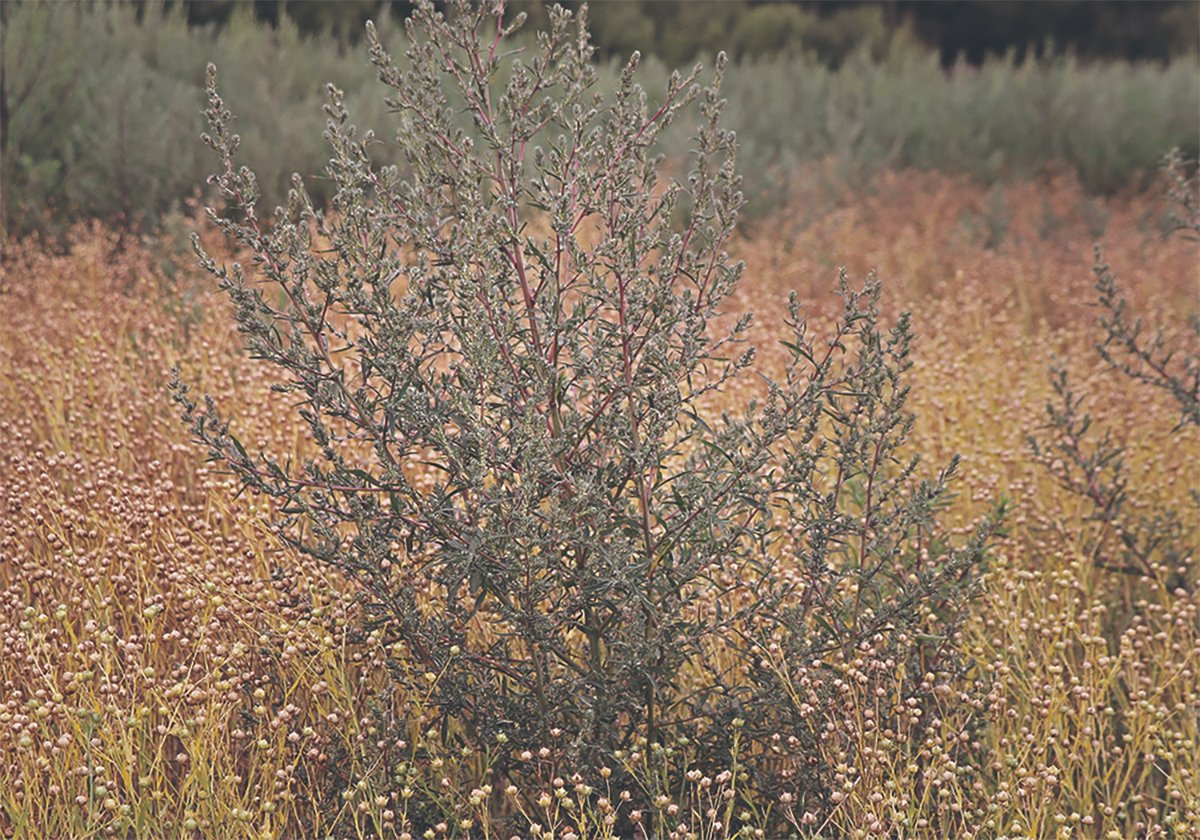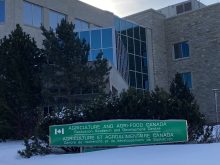There are many questions about protein when cooking without meat. What makes a proper combination?
Protein is made up of substances called amino acids. There are 22 amino acids. Eight of these cannot be made by our bodies and must come from the food we eat.
Animal proteins (meat, fish, poultry, cheese, milk and eggs) contain all the essential amino acids in amounts needed by the body. They are called complete proteins.
Plant proteins (legumes, whole grains, nuts, seeds) lack one or more of the essential amino acids and are called incomplete proteins.
Read Also

Kochia has become a significant problem for Prairie farmers
As you travel through southern Saskatchewan and Alberta, particularly in areas challenged by dry growing conditions, the magnitude of the kochia problem is easy to see.
In order to make an incomplete protein complete, you can use the equation: Pulses (peas, beans, lentils) + whole grains, seeds or nuts = complete protein.
Milk is a complete protein and can supplement either legumes or whole grain products to create a correct combination.
Diet ideas
Using milk and whole grains, make: rice pudding; macaroni and cheese; cheese and rice casserole; cheese and whole wheat bread sandwiches; milk in baked goods made with whole wheat or rye flour (muffins, bread, loaves, cookies, cakes); rice and whole grain bread; or porridge and milk.
Using nuts, seeds and milk, make: peanut butter on whole grain bread; a loaf or muffins with chopped nuts and milk; or cereals with nuts and milk.
Using pulses and whole grains, seeds or nuts, make: baked beans with corn bread or whole grain bread; a lentil loaf topped with cheese; or beans and tortillas.
Pulse recipes
Note: For people concerned about gluten, the following recipes are gluten free. Please read the labels on products you are using. They symbol (*) will be used to identify products that often contain gluten.
Dill spread
A delicious dip with fresh vegetables or crackers.
3/4 cup yellow 175 mL
split peas
1/2 cup low-fat 125 mL
yogurt*
4 ounces low-fat 125 g
cream cheese,
at room temperature
2 tablespoons 25 mL
light mayonnaise*
1 teaspoon dry 5 mL
crumbled dillweed
1/2 teaspoon lemon 2 mL
juice
1/4 teaspoon salt 1 mL
In a food processor, combine peas, yogurt, cream cheese, mayonnaise, dillweed, lemon juice and salt. Mix until well blended.
Cover and refrigerate at least two hours. Yield: 15 servings.
- Gluten-free brand required.
Zesty Italiano salad
3/4 cup Zesty 175 mL
Italian dressing*
1 cup cooked 250 mL
Laird lentils, still hot
1/2 cup sliced 125 mL
carrots
1/2 cup diced red 125 mL
onion
1/2 cup sliced 125 mL
celery
1/2 cup chopped 125 mL
cauliflower
1/2 cup diced 125 mL
sweet green pepper
1/2 cup diced 125 mL
sweet yellow pepper
garlic salt to taste
Pour Italian dressing over hot lentils and let cool. Add carrot, onion, celery, cauliflower, peppers and garlic salt. Refrigerate. Let marinate for 24 hours. Yield: Eight servings.
- Gluten-free brand required.
Can’t beat baked beans
3 cups Pinto 750 mL
beans, soaked overnight
1 can (28 oz.) 796 mL
tomatoes
1/4 cup margarine 50 mL
1 can (14 oz.) 398 mL
pineapple chunks, drained
1/2 cup finely 125 mL
chopped celery
1/4 cup molasses 50 mL
1/4 cup brown 50 mL
sugar
11/2 teaspoons salt 7 mL
1/2 teaspoon ground 2 mL
black pepper
2 cups grated 500 mL
low-fat cheddar cheese
Drain beans. Place in a large saucepan or Dutch oven and add fresh water to cover. Bring to a boil. Reduce heat, cover and simmer one hour, or until beans are tender. Drain.
Add tomatoes and margarine. Heat until margarine is melted. Preheat oven to 350 F (180 C).
In a bowl, combine pineapple, celery, molasses, brown sugar, salt and pepper. Stir well.
Place beans in a three quart (three L) casserole. Cover with sauce. Top with cheese.
Cover and bake 11/2 to two hours. Yield: 12 servings.
Sources
- Shopping For Food … Getting Value and Nutrition, Saskatchewan Health, March 1992. Available through Saskatchewan Health offices.
- Discover The Pulse Potential – Peas, Beans, Lentils, Chickpeas, by The Saskatchewan Pulse Crop Development Board, Regina, August 1994. Available through the Saskatchewan Pulse Crop Development Board, Box 516, Regina, Sask., S4P 3A2, or at bookstores.
















